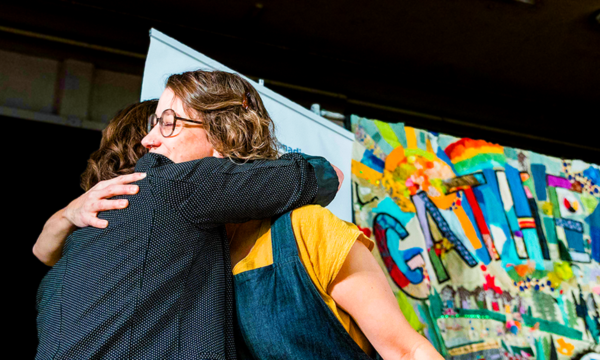Dear CCEDNet friends,
As we close out 2025, I wanted to reach out personally. It’s been a year of change, learning, and quiet rebuilding behind the scenes, and I want to share where we’ve been, and, more importantly, where we’re headed together in 2026.
I know it’s been a while since you’ve heard from us. That silence wasn’t a sign of disengagement. It was purposeful. Over the past months, we’ve been strengthening CCEDNet’s foundation so that we can serve this network with more clarity, consistency, and courage. We’ve been listening deeply, supporting policy conversations across the country, celebrating community leaders, delivering learning programs, and speaking up nationally about community economic development, solidarity economies, and the urgent need for better funding for our sector.
If you’re feeling the financial strain in your own organization, please know this: you are not alone. CCEDNet is feeling it too. The entire community-purpose ecosystem is navigating shrinking funds, rising needs, and more pressure to do everything with less. It’s real, and it’s hard. And it’s exactly why we are doubling down on connection, advocacy, and collective action in 2026.
But here’s the exciting part! Next year, we’ll be reconnecting with you in renewed ways. With early support from the McConnell Foundation we’re launching a field assessment that will help us understand where our sector is thriving, where it’s hurting, and where shared action is needed. We’ll be offering more opportunities to learn from each other, showcase your work, shape policy together, and build the future of community economies in Canada: side by side. You can expect more regular updates, more stories from across the country, and more invitations to join conversations that matter.
As we rebuild for 2026, I’m asking for your support during this Season of Giving. CCEDNet is in a tight financial position right now (there is no sugar-coating it) and your contribution, no matter the size, genuinely makes a difference.
Every dollar invests in policy advocacy, field-building, community learning, and the fight to keep community economies strong across Canada.
Thank you, to our members, partners, funders, and the wider community, for your patience this year and for the work you continue to do every day. You are building possibility in every corner of this country. Please stay connected, share what you’re working on, and join us as we step boldly into 2026.
With deep gratitude,
Celina Caesar-Chavannes
Executive Director, CCEDNet






